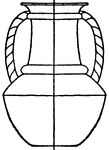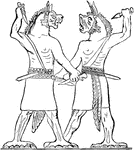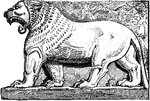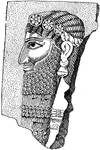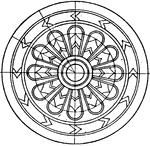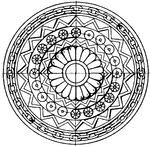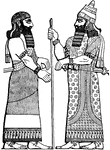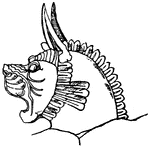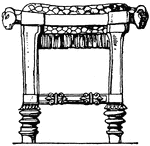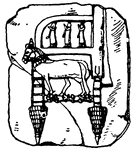Clipart tagged: ‘assyrian’

Assyrian Princess in Full Dress
In ancient Assyria, princes, princesses, and priests vied with each other in luxury.

Assyrian Soldiers Fighting
A depiction of two soldiers fighting for Assyria, using bow and arrows against their enemies.
An Assyrian Statue
"The king, a rude heroic figure, stands upright before the god. He holds a club in the left hand, in…

Assyrian Hunting Bas-relief
"Assyrian bas-relief. Part of a Lion-hunt, from Nimrud." —D'Anvers, 1895

Assyrian Bucket
This Assyrian bucket is designed with a cord handle and terminates at the bottom with a lion mask. It…
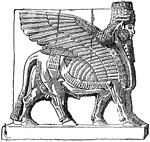
An Assyrian Winged Bull
Also known as a Lamassu. An ancient tutelary deity, often considered to be female.
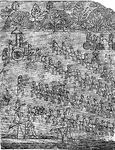
Winged Bull
An ancient Assyrian wall relief, depicting the symbol of a winged bull with the head of a human male.

Assyrian War Chariot
"The stalwart character and aggressive bearing of the Assyrians were particularly shown in war. The…
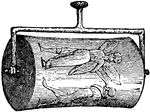
The Seal of Ilgi
"The royal seal or signet used by the Chaldean and Assyrian kings was in the form of a small cylinder,…
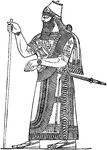
Assyrian King
"The Assyrian physiognomy, as determined by the sculptures exhumed from the ruins of Nimrud and Khorsabad,…

Assyrian Link Border
The Assyrian link border is a painted bas-relief found in Khorsabad, Iraq. It is a scroll design of…

Assyrian Lion
A wall relief of the ancient Assyrian lion. These sculptures were placed in doorways as protective entities.

Assyrian Mule
The animal life of Assyria was extremely varied. This image depicts a mule from this area.
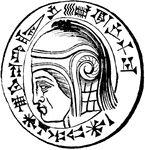
Nebuchadnezzar
"The most illustrious of Babylonian kings, was the son of Nabopolassar, the general of the Babylonian…

Assyrian Pavement Square Panel
The Assyrian pavement square panel is a divided into eight equal spaces that are decorated with a repeated…
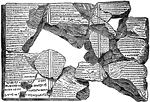
Assyrian Table with Deluge Legend
An illustration of an Assyrian tablet depicting part of the Deluge legend. A deluge myth or flood myth…
